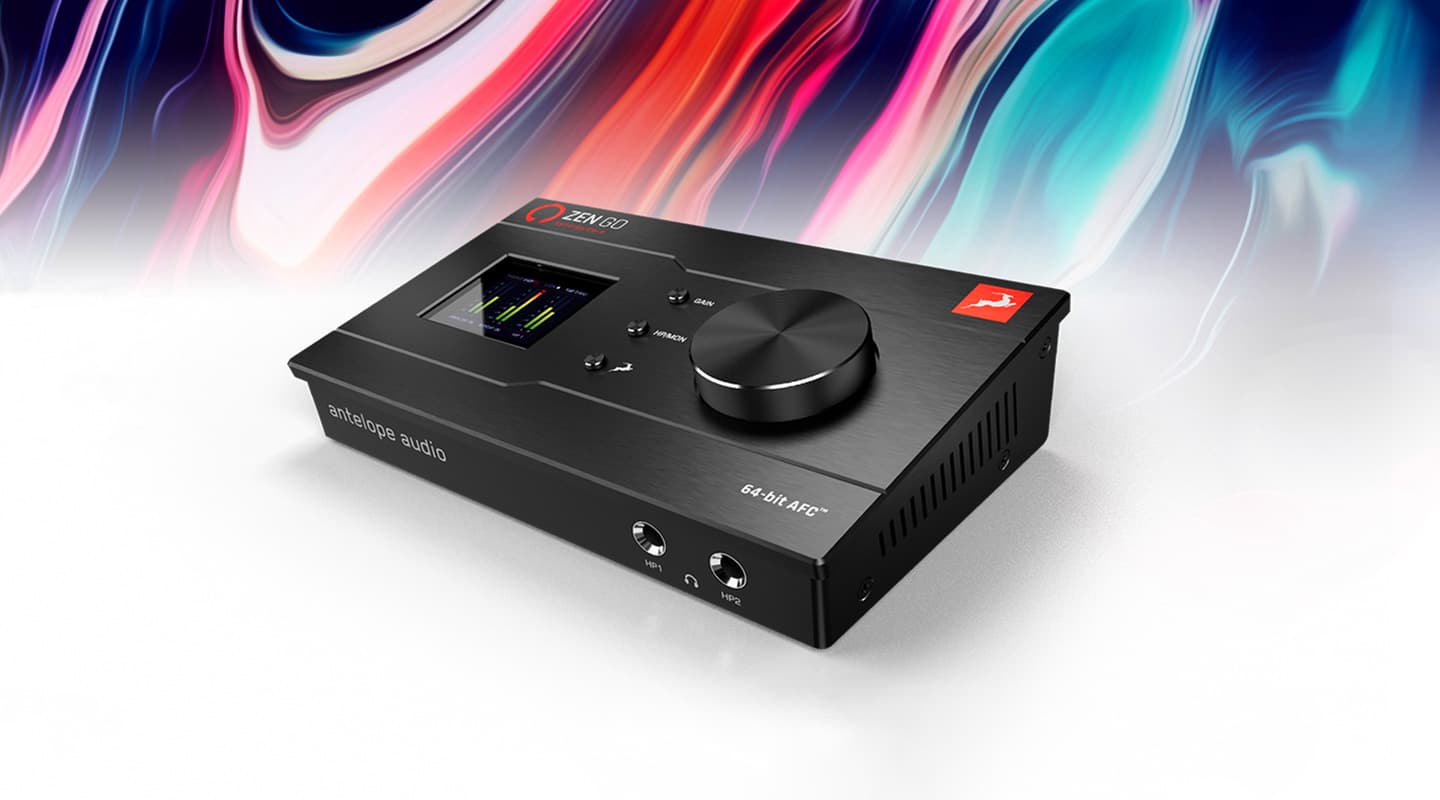
Review: Antelope Audio Zen Go Synergy Core
Antelope squeezes Synergy Core real-time DSP + FPGA technology into its smallest interface yet.
Onboard DSP is how Antelope Audio – a European audio manufacturer with a history in mastering-grade clocking and conversion – made its mark in the audio interface market. The company also gained a reputation for shoe-horning enormous amounts of inputs and outputs into regular-sized interfaces. The flagship Galaxy 64 Synergy Core interface offers 64 channels of analogue I/O and 324 channels (!) of digital I/O each way in a 2U rack unit. My Zen Tour desktop interface also hides a deceptively large I/O count of 32 ins and outs. I’ve always thought Antelope’s philosophy must be “extra inputs are never a bad thing”.
With its new Zen Go, Antelope Audio has kept the vital onboard DSP ingredient while embracing a minimal approach to I/O, resulting in the company’s smallest interface yet.

GO TIME
The Zen Go looks like the perfect miniature offspring of my Zen Tour – more petite but equally sturdy and similar aesthetics. Its design is largely borrowed from the chunkier sibling, including the screen on the left, Gain/Headphone/Antelope buttons in the middle, and large stepped multi-function knob on the right. One key difference, apart from fewer inputs and outputs, is the Zen Go’s screen doesn’t respond to touch.
A nifty trick up Zen Go’s sleeve is you can plug a phone charger or power bank into it and it’ll pass audio without a computer. Another cool feature is a loopback circuit which lets you route the output of a monitoring mix (live inputs and all) back into the computer for applications like live streaming.
CORE VALUES
Inside Zen Go’s palm-sized chassis lie two chips – one DSP and one FPGA. This combination forms the basis of ‘Synergy Core’, Antelope’s onboard processing platform. Synergy Core combines the strengths of both types of processing (hence ‘Synergy’) to power a growing suite of Antelope’s analogue-modelled effects at nearly zero latency. The two chips onboard Zen Go can reportedly process up to 32 simultaneous instances of effects.
In my view, this is the most appealing feature of the Zen Go. Most interfaces I review these days offer the opportunity to track through hardware-accelerated effects thanks to built-in processing power of some sort. Typically, this primo feature doesn’t come cheap. Zen Go bucks the trend – you don’t need to spend thousands to reap the benefits of hardware DSP, neither do you need a big rack unit or over-the-top I/O if your requirements don’t call for it.
Antelope Audio Zen Go Synergy Core
USB-C Interface with DSP
NEED TO KNOW
FX: MODELLING JOB
Ever since I got my Zen Tour I have been a big fan of Antelope’s effects. Every processor adds something special to a recording. Familiarise yourself with the sonic flavour of each EQ and compressor and soon it’ll feel like you have your own rack of outboard to make perfectly-curated signal chains for every recording session.
What’s exciting about Synergy Core is the potential for growth, not least through collaboration with third-party plug-ins. Already Antares has teamed up with Antelope Audio to create Auto-Tune Synergy, and Inertia Sound Systems has developed the creative Instinct Synergy modulation effect. Then there’s Overloud which helped create authentic emulations for guitarists. New emulations of desirable processors from the past fill Antelope’s software store at a steadily increasing rate. As the library of Synergy Core-powered effects expands, Antelope’s DSP-capable interfaces like the Zen Go represent more and more value.
START UP
Initiating the Zen Go was painless. Plug the Zen Go into your computer using the supplied USB-C cable, then activate it in your Antelope account to reveal the Launcher software download. Instantly, the Antelope Launcher recognises the Zen Go and places it on the software’s home screen. I chose to update Zen Go’s firmware from the Launcher which mercifully occurred without a hitch. Then it was simply a matter of opening the Control Panel software to control the zero latency mixers and DSP, and the Zen Go was ready for action. To Antelope’s credit, the company has done an excellent job rectifying the software setup issues which bedevilled earlier interfaces to deliver what’s now a smooth and effortless experience.

IN CONTROL
The modern and intuitive Control Panel GUI is reasonably easy to navigate. Both analogue preamps are controlled from the top left hand corner section. The mixer can display eight or 16 channel strips with each channel freely assignable from a dropdown menu.
You get four channels of Synergy Core effects which appear as the first four mixer tracks. After picking the inputs, apply any of the 37 included DSP effects by clicking the empty box above the channel fader to open a separate AFX window. Here you can create a custom signal chain, with options ranging from several EQs and compressors including recognisable emulations, Antelope’s own parametric EQ/compressor/gate/expander, and a few modulation plugs. Guitarists aren’t left out – Antelope’s partnership with Overloud led to a selection of better-than-average simulations of amps and cabs with a fair amount of tonal flexibility. The library contains emulations of amplifier heads and cabinets from Vox, Fender, Marshall and Orange, to name a few. Emulations of the Gyratec IX and RCA BA-31 preamps are in the bundle as well – great for adding a bit of grit to a track.
Antelope’s tracking reverb AuraVerb lies unassumingly in the right hand corner and is available for all 16 mixer channels. It opens in a separate window from which you can adjust send levels and reverb parameters. The main Monitor mix is mirrored on the HP1 headphones output. Artist mixes can be created through the second mixer which feeds the HP2 output on the interface. Access this mixer by clicking the Headphones 2 tab on the lower left side of the GUI window. Mixer and I/O configurations can be saved and recalled.
LITTLE BOX, BIG SOUND
After a few days putting the Zen Go to work, the little interface’s sound quality didn’t fail to impress. Firstly, of course, is the DA conversion with 127dB dynamic range, which presents music with immense detail and breathes new life into your monitors. Many small interfaces skimp on conversion to cut costs but Antelope isn’t guilty of this and I’m grateful for it. The generous 65dB of gain from the preamps is nice and quiet should you need to push it on a dynamic or ribbon mic. Tonally the preamps are clean, at the expense of character, but that’s quite okay because of the next plus: the Synergy Core effects. Want to dirty things up? Run it through a boutique preamp emulation (the aforementioned BA-31 is a favourite of mine). Or should you choose to craft a more complicated signal chain, each effect adds a sonic brushstroke of its own which plays nicely with the transparent pres to give you a mouldable front end and an expensive sounding recording. With all the sonic possibilities available, make sure you give yourself a few extra minutes before hitting record to play with the effects and find the right sound for a track.
As for driving the interface, control is limited on the Zen Go unit itself. The lack of touchscreen means preamp functions like phase inversion, phantom power and stereo link must be switched in the software, although I doubt this will be a major inconvenience for anyone given how accustomed we are to software control.
UP & GO
There’s no shortage of reasons to consider buying the Zen Go. I’d be happy if its only role is a neat little D/A converter on my office desk! But for the producer, musician or enthusiast who’s keen to incorporate real-time effects into their recording workflow, the Zen Go strikes me as a very tempting entry point into the world of DSP acceleration. If two analogue inputs suffice, the Zen Go does away with bulky rack units and power cables. I can see it as the perfect overdubbing interface for itinerant recordists who still appreciate running mics through analogue-modelled DSP effects even when tracking last minute takes in the band’s garage or tour bus in the middle of nowhere. It’s a first-rate podcasting interface too. Being bus-powered it’s no issue if you’re away from a power socket. Run your laptop off the battery; plug in two mics; compress, filter and gate on the way in; then hit Export.
Accessibility and portability are Zen Go’s selling points for me — the first because of its pricepoint, and the second because it’ll slip straight into a shoulder bag. Antelope Audio must have known the world needed a pocket-sized DSP-loaded interface. I think Zen Go proves they were right.


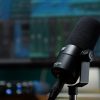
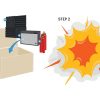
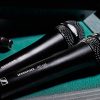













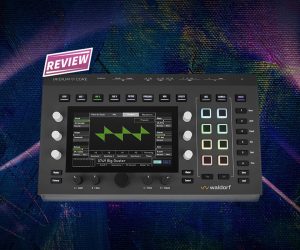
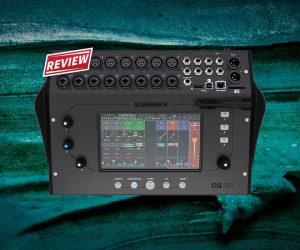



bang for buck! thing is excellent! tons of plug ins and possibilities. good customer service and support team if you’re not a tech person as myself.
I’m loving the Antelope Audio Zengo, it’s impressive. It uses the same 4th gen AFC clocking as their legacy Zodiac range of DACS which were about $4000!! It’s all good quality stuff. Good review too, thanks for the extra info.